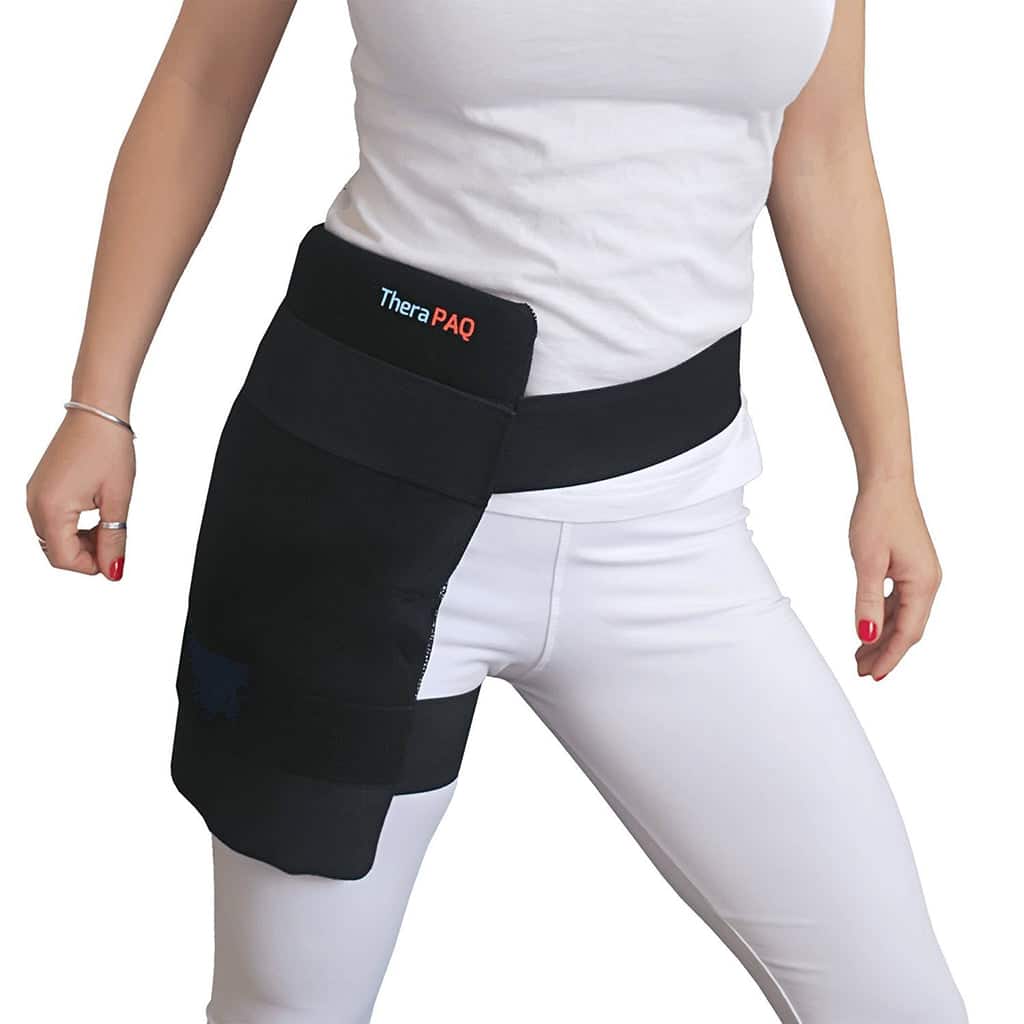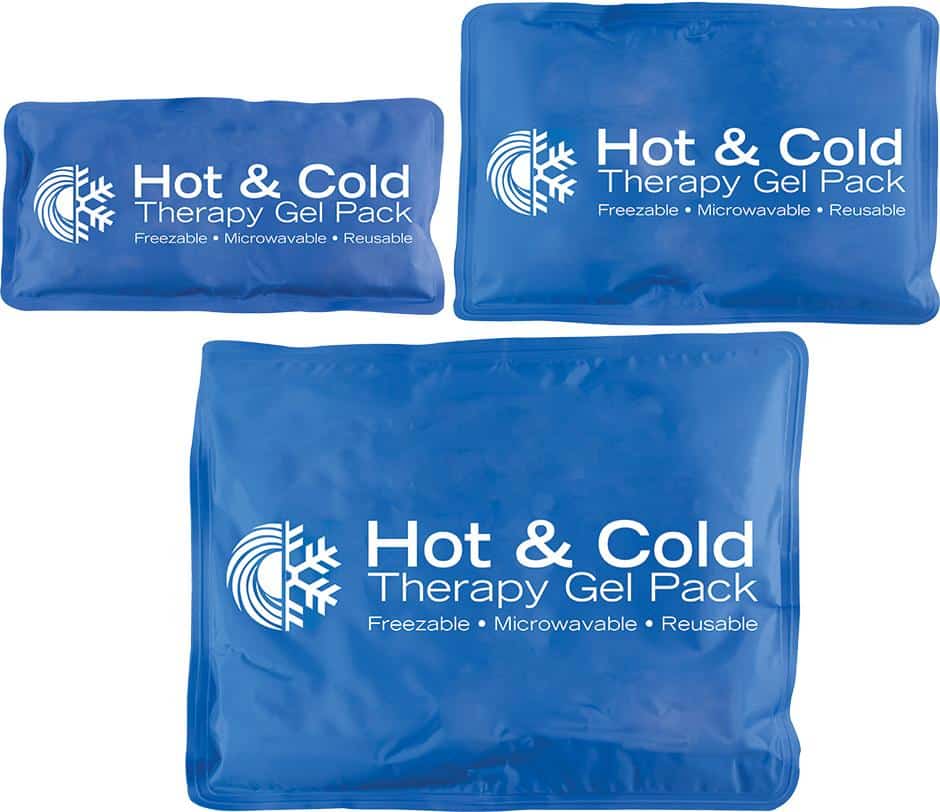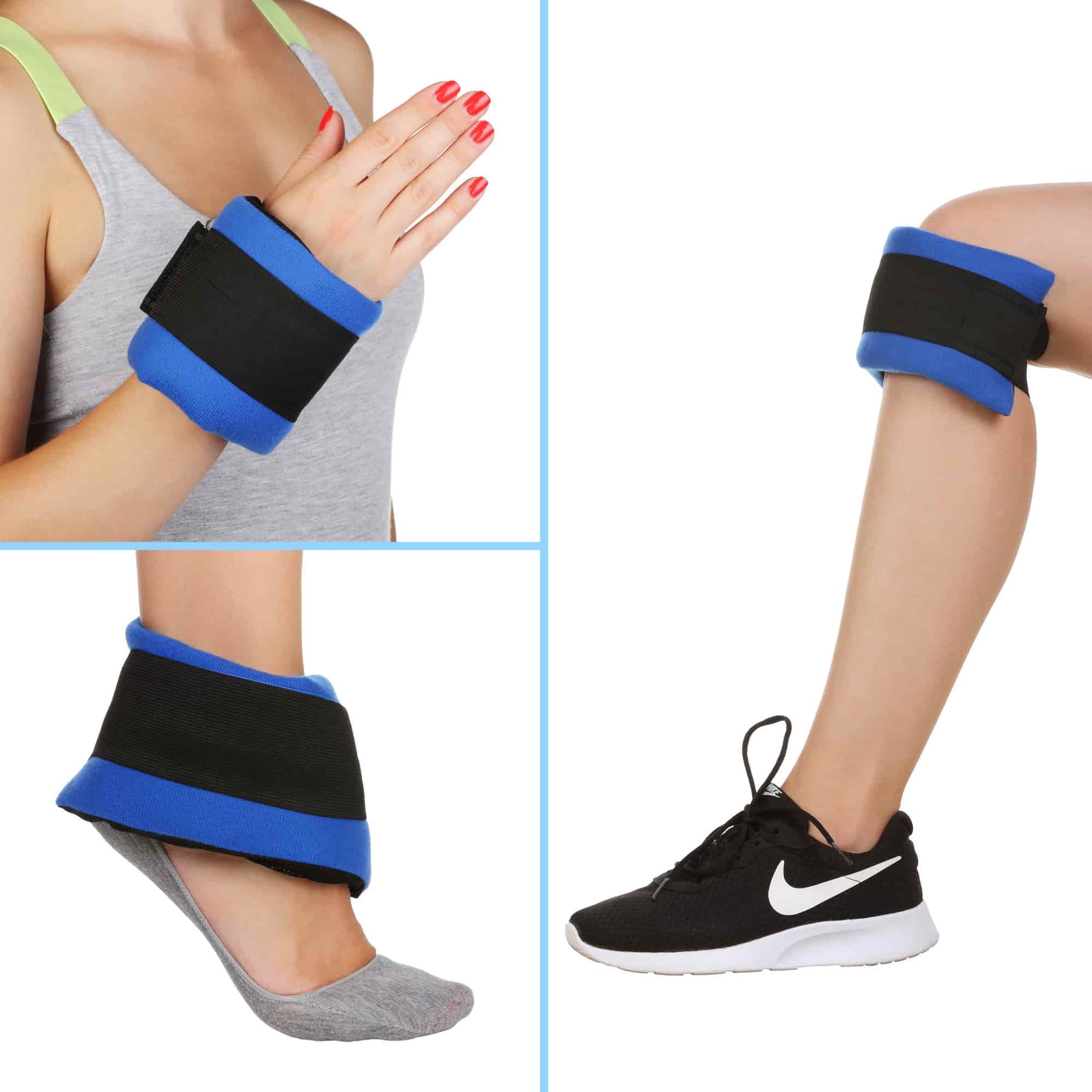When To Use Heat For Joint Pain
Heat tends to be more beneficial for the types of everyday joint pain, such as stiffness, that people with arthritis experience. You can use dry heat, like from a heating pad, or moist heat, like from a moist towel warmed up in the microwave for 20 to 60 seconds. Moist heat tends to transfer through the skin more quickly and efficiently, Dr. Torres-Panchame says.
How to Use Heat for Joint Pain
As a guideline, dont apply heat to an area of your body for more than 20 minutes at a time or you could risk burning your skin. As with ice, dont put a heated object on your skin without some kind of protective barrier, like a cloth or towel. Heat also can follow ice therapy once the cold brings down swelling and inflammation, Dr. Torres-Panchame says.
As with ice, being careful and attentive is important to prevent injury. If something feels too warm, then probably its too warm, Dr. Bose says. So the temperature needs to be comfortable, ideally, not too hot, because it can burn your skin.
Types of Heat Therapy
Safety with Heat Therapy
Check your skin after five minutes to make sure there are no signs of burns and check again a few times while using heat, Dr. Torres-Panchame says. If you start seeing blisters forming, that is too hot. You need to remove the heat or else you can cause skin damage, she said.
This is especially important for people who have neuropathy or any other condition that makes them less sensitive to touch and temperature.
When To Use Cold Therapy:
- If you have had a recent injury where swelling is a problem.
- Apply an ice pack, frozen gel pack or even a bag of frozen vegetables wrapped in a towel to the affected area. You should never apply a frozen item directly to the skin, as it can cause damage to the skin and tissues.
- Apply cold treatment as soon as possible after an injury.
- Use cold therapy for short periods of time, several times a day. Ten to 15 minutes is fine, and no more than 20 minutes of cold therapy should be used at a time to prevent nerve, tissue, and skin damage.
- Elevate the affected area for best results.
The Link Between Weather And Joint Pain
It isnt entirely clear why weather affects people with arthritis, but the link between weather and arthritic pain has been extensively studied. People with arthritis may experience pain in places where temperature changes are more extreme and in damp climates. They also experience pain in response to climate factors like humidity, air pressure, and wind speed. Temperature and barometric pressure have also been noted as contributing factors to joint pain. Understanding how different weather patterns affect pain can help people with arthritis find the best climate for them.
AntonioGuillem / Getty Images
Also Check: What Are The Best Exercises For Arthritis In The Knees
Using Heat Or Cold Remedies For Arthritis
A major concern that arises is how exactly should one apply these methods or how often can they be used? We recommend using moist heat or ice packs in any of the above-mentioned forms at least twice a day for significant relief from your pain and stiffness.
In a research conducted at the American College of Rheumatology, they stated that five to 10-minute ice massages applied on the pain site within the time span of first 48 hours of pain onset can provide relief effectively. So can heat treatment, which relaxes the muscles in the body. Heat packs should preferably be used for pain that lasts longer than 48 hours.
Recommended Reading: Things To Help Arthritis In Hands
Using Both Heat And Ice

In some situations, applying both ice and heat to your joint may be helpful. Called contrast therapy, this treatment involves alternating between icing and heating a joint. While this option has traditionally been utilized after exercise or participating in a sporting event to aid in recovery, it may be helpful for more chronic conditions as well. This style of treatment can be performed using hot and cold packs or by alternately submerging the knee in hot and cold water.
While individuals who received contrast therapy subjectively reported less overall soreness and muscular fatigue, the research is still mixed. The current evidence is lacking on whether this treatment is helpful in managing the pain associated with a knee injury or in reducing your inflammation levels.
Also Check: What Really Causes Arthritis
Read Also: What Can Help Rheumatoid Arthritis
S Of Using Heat Therapy
People can choose a method of heat therapy that works for them. Different ways to use heat include:
- Warm shower: Taking a long, warm shower may help ease the joints, increase range of motion, and reduce stiffness. A person can aim for a shower temperature of 92100°F .
- Damp, warm compress: A person can dampen a clean towel and heat it in a microwave, so the temperature feels comfortable to apply to affected areas.
- Warm bath: Individuals can soak in a warm bath for around 20 minutes. They can also try adding magnesium sulfate crystals, or Epsom salts, to increase magnesium levels. Magnesium is an important mineral for bone and heart health.
- Heating pads or hot water bottle: Someone can use a moist heating pad or fill a hot water bottle and leave it on the affected area while resting or sitting down.
- Paraffin wax: A person can melt paraffin wax, and after checking it is not too hot, dip the hands, feet, or any aching joint into the wax. They should wait for the wax to cool and harden before peeling off.
- Warm pool: People can swim or exercise in a warm pool 23 times per week to increase flexibility and range of motion.
Use Mineral Oils And Rubber Gloves
If PsA affects your hands, try this simple method. First, rub mineral oil on your hands. When youre ready, place them in a pair of rubber gloves and run warm water over them. You can do this for about 5 to 10 minutes.
You can use cold therapy at home during flares to soothe inflammation. Here are a few methods you might find helpful.
Read Also: Side Effects Of Arthritis Medications
Read Also: Is Massage Good For Arthritis In Hands
And The Short Answer Is
Fortunately, whether youve used hot or cold compresses overthe years, research shows that both are effective for helping peoplesuffering from osteoarthritis. When heat is applied to a joint, it causesthe blood vessels to dilate, increasing blood flow to the area, which in turncan help with pain and inflammation. On the other side of the coin, cold causesthe blood vessels to constrict and numbs the tissues, which can help with acutediscomfort.
In the end, whichever one you choose, science shows that itcan help soothe a troubled jointits mostly up to your preference. Whether youget your heat from a hot shower, warm washcloth, or heating pad doesnt matteras well. The same applies to using a bag of ice or frozen peas. The only thingto keep in mind is that either method should only be applied to the skin in10-15 minute incrementsany longer than that could potentially damage it.
Saunas And Steam Rooms
You can use a dry sauna, infrared sauna, or steam room to improve circulation and alleviate stiffness.
The results of a 2018 review suggest that consistent use of a dry sauna is beneficial for people with rheumatoid arthritis as well as chronic pain syndrome. It may also help athletes to improve performance.
You can stay in a dry sauna or steam room for up to 15 minutes though you may want to begin with shorter sessions. Give yourself plenty of time to cool down in between sessions.
If youre pregnant, talk with your doctor before using a sauna or steam room.
You May Like: What Doctor Takes Care Of Arthritis
Cold Therapy May Be Superior For Gout And Rheumatoid Arthritis Pain
These conditions often cause flare-ups acute episodes of pain, where the joint gets more swollen than usual. Applying ice packs 2-3 times per day will reduce that inflammation in no time.
Yet, research suggests that applying a cold pack twice a day may reduce the levels of inflammatory chemicals within the knee joint fluid.
In the long term, this could mean less pain and swelling in people with gout, pseudogout, and rheumatoid arthritis.
Don’t Forget About Cold Therapy Too
Now that we know all about the hot, what about the cold? Cold therapy is great for helping reduce inflammation in its acute phase. Cold also reduces swelling, which can make a huge difference in a stiff and painful arthritic joint. Because of these benefits, cold therapy is the best choice of thermotherapy during an acute rheumatoid flare as opposed to stiffness.
You can use simple cold therapy at home by applying cold packs to an achy joint. Cold packs are commonly found items that may already be in your household. For example, a bag of frozen peas can work just as great as your standard gel ice pack. There are also specialized cooling packs shaped for certain regions of the body such as the back, knees, and neck.
Don’t Miss: How Does Enbrel Work For Rheumatoid Arthritis
Surprising Facts About Arthritis Pain
Even though pain may interfere with work relationships and daily life few Americans talk to their doctors about it. Did you know:
- Fewer than half of Americans with severe or moderate pain report that they have a great deal of control over their pain.
- Fewer than half of people who visit their doctor for pain believe that their doctor completely understands how their pain makes them feel.
Take Your Meds In Bed

Crawling out of a warm, cozy bed on a cold day is no fun. Add in arthritis pain and it can be pure torture. Keep your daily arthritis and pain medications within reach of your bed. I keep all my medications and a fresh bottle of water on my bedside table so all I have to do is reach over and take them, says Amy K., 42, who has ankylosing spondylitis. You can even try to sneak in an extra bit of sleep in the morning while you wait for them to kick in.
You May Like: How To Get Rid Of Arthritis Pain In Your Knee
Recommended Reading: Can Psoriatic Arthritis Cause Jaw Pain
If You Answered With Stiffness In The Knee Muscles
Heat, heat and more heat. Honestly, the best results Ive seen come when someone has applied heat to the knee muscles to allow better movement and less of that horrible cant-bend-your-knee sensation.
For best effects, use this method:
- Start sitting in a chair
- Take a hot water bottle
- Slip it over your thigh and apply it to the stiffest area
- Keep it there for 15 minutes, then remove
- Allow the skin to cool to a natural temperature, then repeat the process
- Always look out for any signs of heat burn on your skin and remove immediately if you see or feel anything.
Also Check: Is Cycling Good For Arthritic Knees
When Heat & Cold Arent Enough
Of course, it should be stated that neither heat or cold canhelp treat the underlying source of osteoarthritisa loss of cartilage in thejoint. They can just address the symptoms, but over time, the joint willcontinue to break down. In order to slow down this process and prevent it from affectingthe functionality of a joint, daily heat or cold should be combined withprofessional care recommended by a doctor. Regenerative therapies like stemcell injections, PRP, and prolotherapy can dramatically improve the overallhealth of a joint and often help a patient avoid the need for invasive surgerydown the line.
So in the end, heat and cold both offer a fast and easy wayto deal with osteoarthritis symptomssimply choose the one that works best foryou. Just be sure to consult a doctor so you can protect and preserve yourlong-term health as well!
About the Author
Dr. PaulTortland is board-certified in both sports medicine as well as regenerativemedicine, and his clinic, the New England Stem Cell Institute, was one of thefirst in the nation to offer treatment using stem cells derived from a patientsown body fat and bone marrow. He has helped countless osteoarthritis patientsget out of pain and reclaim their ability to move without resorting to surgeryor medication, and you can learn more about what he could do for you by giving our Glastonburyoffice a call today.
Also Check: How To Prevent Rheumatoid Arthritis In Hands
Recommended Reading: What Medicine Do You Take For Rheumatoid Arthritis
How Often Should I Use Heat Or Cold Therapy For Arthritis Pain
Try to use moist heat or ice packs at least twice a day for the best relief from pain and stiffness.
According to the American College of Rheumatology, five to 10-minute ice massages applied to a painful area within the first 48 hours of pain onset can provide relief. So can heat, which relaxes the muscles. Heat should be used for pain that lasts longer than 48 hours.
Cold Therapy: How To Use It For Knee Pain Relief
Cold treatments do the opposite effect they constrict the blood vessels, thus lowering the amount of blood entering the area. As a result, this can reduce inflammation.
Ice has a numbing effect too, making it an ideal tool for soothing arthritis pain. It can be extremely helpful in some situations where heat is counterproductive, such as:
- The first days after an acute injury.
- Right after a workout.
- After a long day where you overexerted yourself.
- For flare-ups in chronic knee joint conditions.
Cold therapies can also help reduce the pain from an infection as long as its not an open wound and youre taking antibiotics.
Don’t Miss: Does Australian Dream Work For Arthritis
Safety Guidelines For Heat Therapy
To prevent burns, do not use heat for excessive lengths of time, and be careful to frequently check skin for redness while applying heat. If the heat starts to feel uncomfortable, discontinue immediately: The last thing you want to do is trigger a psoriatic flare by injuring your skin.
RELATED: What Psoriatic Arthritis Really Feels Like
Heat Treatment For Arthritis
Heat treatments using heating pads or taking warm baths, tend to be the least expensive and most effective remedy for soothing stiff joints and tired muscles.
Heat, when applied to the body, enhances circulation, delivering the required nutrients to joints and muscles making the body limber and ready for exercise. Applying heat on arthritis affected joints also alters the sensation of pain.
Some easy ways to use Heat therapy for arthritis include:
If you let hot water or any of above heat treatment measures impact your painful joints for say 5-10 minutes daily, the continuous heat flow on the pain site will keep the pain minimal and help you easing the movements and redefining your limits.
You May Like: How To Overcome Arthritis In Knees
If You Answered With Pain In The Knee Joint
You might want to opt for ice. If your main problem is knee joint pain, I would apply the ice directly to the most painful area of the joint.
Youll want to use a few layers between the ice and your skin. My preferred method would be:
- Take a bag of frozen peas from the freezer
- Wrap a thin towel around them
- Dampen the towel slightly, then apply to the painful area for 15 minutes
- Remove the peas/towel and let the area heat back up to its natural skin temperature
- You can then apply the peas/towel again. There is no limit to how many times you can do this.
- Always look out for any signs of ice burn on your skin and remove immediately if you see or feel anything.
You May Like: What Do You Do For Water On The Knee
When To Use Heat With An Older Dog:

Heat should be used for chronic conditions and should be avoided after acute injury, immediately post-surgery or flare-up of an injury or osteoarthritis. It should be used for 15 20 minutes over the affected area. Ensure the heat pack is not too hot to avoid burns. You need to ensure you check your dogs skin to ensure it is only just warm. Never force your older dog to have a heat pack if they dont like it. Heat can be used once to three times per day in colder weather.
Read Also: Are Eggs Bad For Arthritis
Stay Active And Hydrated
Staying active will help to keep your blood flowing. Aim to consume less salt salt makes your body retain extra water, while drinking more water can dilute salt levels. To ease the swelling, raise your feet or put a pillow under your ankles while youre in bed.
Professor Walker-Bone recommends using ice packs or having cool showers. Adjust the temperature of the water to suit your personal preference, she says. If you use ice, remember to wrap it in a tea towel first so it doesnt burn your skin. Cooling gels and sprays may also help. If youre sweating more than usual, this can make you dehydrated, so keep topping up your fluid levels with regular drinks.
If you have gout, its particularly important to avoid getting dehydrated, as this can trigger an attack. Read our managing gout top tips.